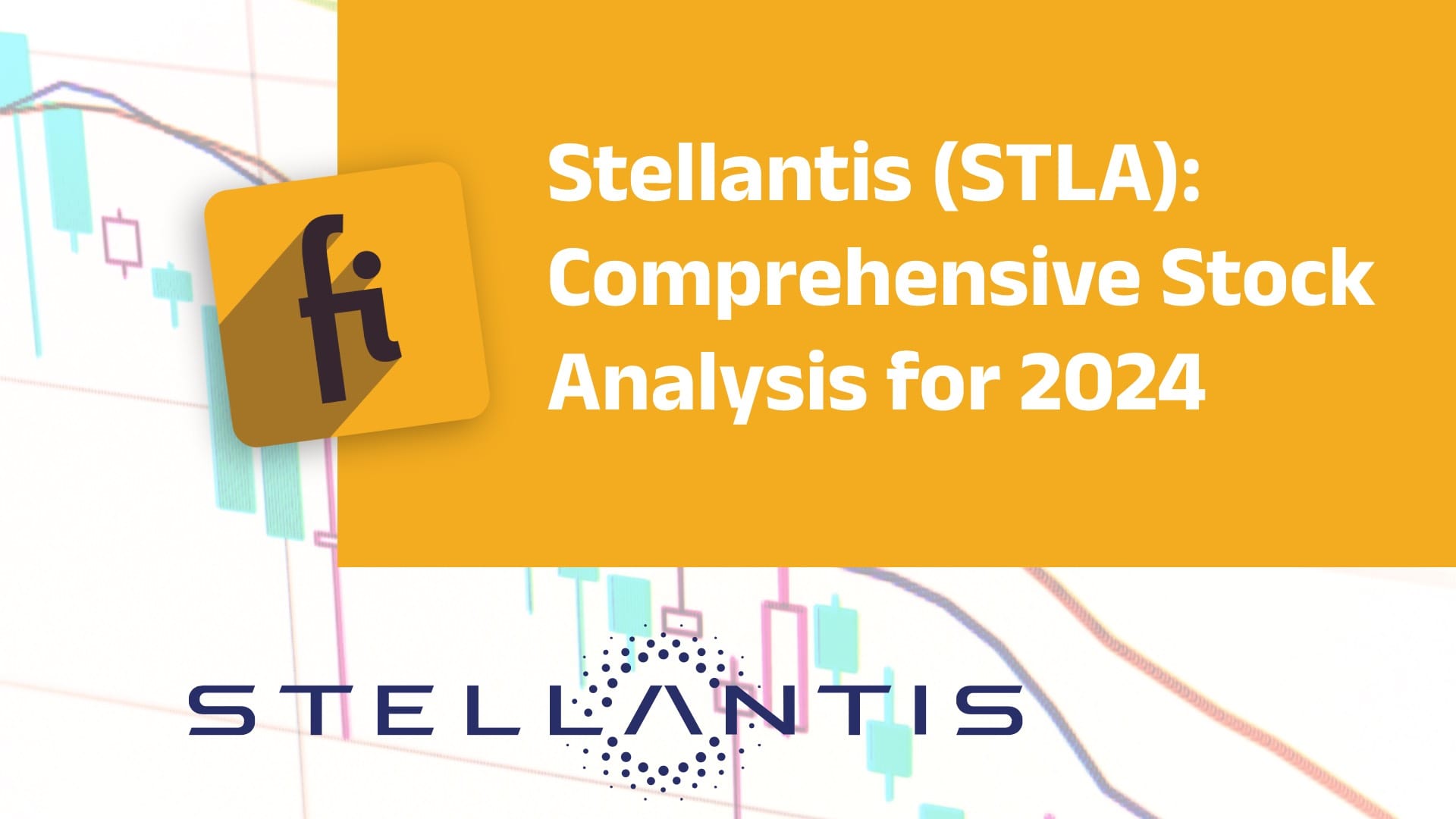
Stellantis (STLA): Comprehensive Stock Analysis for 2024
Table of Contents
Introduction
Stellantis N.V. is a leading global automotive manufacturer formed through the merger of Fiat Chrysler Automobiles (FCA) and PSA Group in January 2021. The company, with a portfolio of 14 storied brands including Jeep, Ram, Dodge, Peugeot, and Citroën, is positioned as one of the world’s largest automakers. This analysis aims to provide an in-depth evaluation & financial health, market position, and investment potential.
Company Background
History and Milestones: Stellantis was created to leverage the strengths of FCA and PSA, combining American, Italian, and French automotive legacies. The merger aimed to enhance scale, innovation, and market reach, particularly in the rapidly evolving electric vehicle (EV) sector.
Business Model: STLA generates revenue primarily through the sale of automobiles and related services. It also earns from financing, leasing, and after-sales services. The company is aggressively expanding its EV offerings to meet global sustainability goals.
Management Team: Carlos Tavares, the CEO of the company, previously led PSA Group to financial health and growth. Under his leadership, Stellantis focuses on achieving synergies from the merger and driving innovation in the EV market.
Financial Analysis
Revenue and Earnings Trends: In 2023, Stellantis reported net revenues of €189.5 billion, up 6% year-over-year, and a net profit of €18.6 billion, reflecting an 11% increase. This growth is attributed to strong performance in North America and a recovering European market.
Profit Margins: Stellantis boasts healthy profit margins, with a gross margin of 17.5%, an operating margin of 10.2%, and a net margin of 9.8% in 2023. These margins are competitive within the automotive industry, indicating efficient operations and cost management.
Cash Flow: The company’s operating cash flow increased by 15% to €21.4 billion, driven by robust sales and improved working capital management. Free cash flow also showed a significant rise, ensuring ample liquidity for strategic investments and shareholder returns.
Debt Levels: Stellantis maintains a conservative debt profile with a debt-to-equity ratio of 0.32. The company’s strong cash flows and strategic debt management enable it to comfortably service its debt obligations.
Return on Equity (ROE) and Return on Assets (ROA): In 2023, STLA achieved an ROE of 18.5% and an ROA of 8.4%, showcasing effective utilisation of equity and assets to generate profits.
Competitive Analysis
Market Share: Stellantis holds a significant market share in both North America and Europe. It is the second-largest automaker in Europe by sales volume and has a strong presence in the lucrative North American market.
Competitive Advantages: The company’s diverse brand portfolio, extensive dealer network, and strong focus on innovation, particularly in the EV sector, provide a competitive edge. Additionally, its global footprint and economies of scale enable cost advantages.
Industry Outlook: The automotive industry is poised for transformation with increasing emphasis on electric and autonomous vehicles. Stellantis is well-positioned to capitalize on these trends with its comprehensive electrification strategy.
Valuation Metrics
Price-to-Earnings (P/E) Ratio: Stellantis’ P/E ratio stands at 3.1, which is lower than the industry average, indicating that the stock might be undervalued relative to its peers.
Price-to-Book (P/B) Ratio: With a P/B ratio of 0.8, Stellantis is trading below its book value, suggesting potential for price appreciation.
Dividend Yield: An attractive dividend yield of 6.24%, providing a steady income stream for investors.
Other Ratios: The EV/EBITDA ratio of 1.68 further supports the view that Stellantis is undervalued compared to industry averages.
Intrinsic Value Calculation
Discounted Cash Flow (DCF) Analysis: Based on a DCF analysis, factoring in a discount rate of 8% and a terminal growth rate of 2%, the intrinsic value of Stellantis is estimated at $28 per share.
Comparable Company Analysis: Comparing Stellantis to similar companies like General Motors and Ford, Stellantis appears to be trading at a discount, reinforcing its potential for price growth.
Other Valuation Methods: Using the Gordon Growth Model, with a dividend growth rate of 3%, the stock’s intrinsic value is calculated at $27 per share.
Risk Analysis
Market Risks: Macroeconomic factors such as inflation, interest rates, and geopolitical tensions pose risks to Stellantis’ global operations.
Company-Specific Risks: The integration of FCA and PSA remains a critical challenge. Additionally, reliance on semiconductor supplies and the transition to EVs present operational risks.
Industry-Specific Risks: The automotive industry faces regulatory pressures for emissions reductions and increasing competition in the EV space.
Investment Thesis
Bull Case: Stellantis’ strong financial performance, strategic focus on electrification, and attractive valuation metrics suggest significant upside potential.
Bear Case: Potential risks from merger integration issues, supply chain disruptions, and economic downturns could impact the stock negatively.
Conclusion: Based on the analysis, it appears to be undervalued with a target price range of $25-$30 per share, offering a compelling investment opportunity.
Actionable Insights
Recommendation: Buy with a short-term target of $28 and a long-term target of $35. Monitoring Plan: Regularly review quarterly earnings, EV sales performance, and macroeconomic indicators to adjust the investment thesis as necessary.
Additional Resources
- Stellantis 2023 Annual Report
- Latest SEC Filings
- Stellantis Investor Relations
- Market Analysis on Yahoo Finance
- Morningstar Stock Analysis
Disclaimers: This analysis is for informational purposes only and does not constitute financial advice. Investors should perform their own due diligence before making investment decisions.
By leveraging comprehensive financial data and industry insights, this blog post aims to provide a thorough evaluation of Stellantis’ stock, offering valuable guidance for potential investors.
